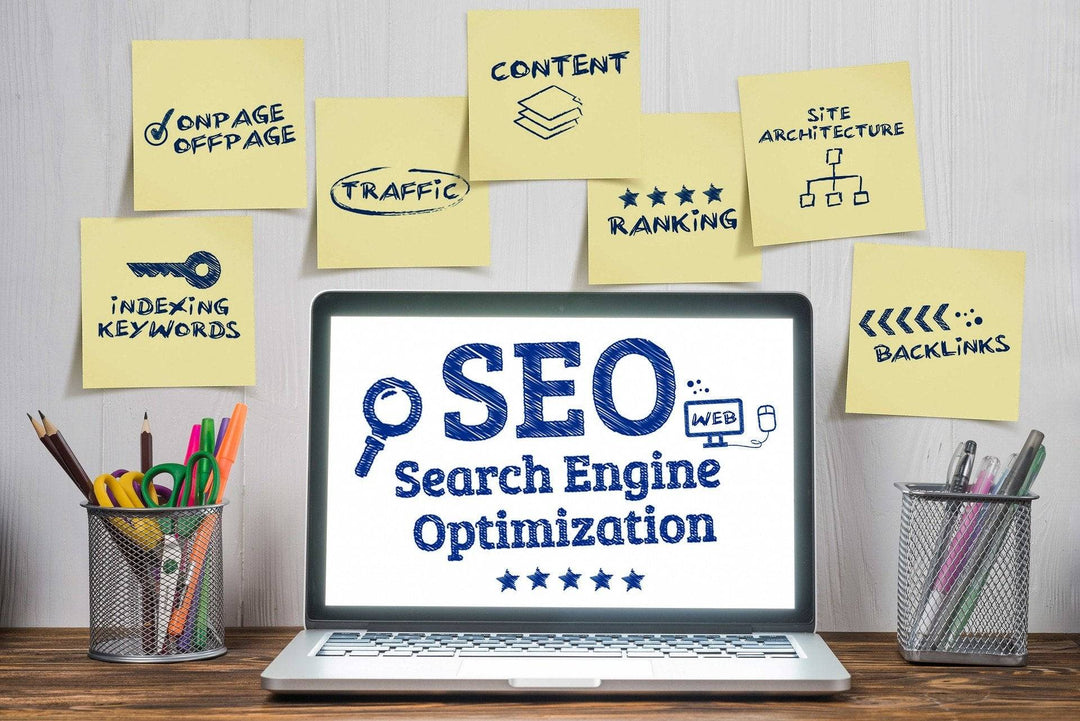Whether you're running an e-commerce store or a blog, one of the best ways to improve your search engine ranking is to optimize your site for Google. Getting your Shopify website ranked higher on Google is one of the easiest ways to improve its sales. Without proper SEO, your site can be invisible to the people searching for it. Your end-users may not even know you exist if your site doesn't show up on their search results. It's important for your business to be on Google. That's why Shopify SEO is so important to make sure that your site does not get flagged by Google.

In this article, we will cover how you can optimize Shopify for Google and get a better ranking on Google. Let's look at some of the top tips you must consider while optimizing Shopify SEO.
Read More: SHOPIFY UNVEILS NEW FEATURES: DON’T MISS YOUR CHANCE TO IMPROVE YOUR BUSINESS
1. Create a Site Hierarchy
A hierarchy is the most basic part of SEO, but it's also one of the most important. When you create your site, take the time to think about what you want visitors to see when they land on your website.
Create a site hierarchy by starting with the main page and working down from there. Your home page should be something that will draw in new visitors and encourage them to stay on your site. You can also use this page to showcase the products or services you offer.
Don't forget that you can create multiple pages within each section of your site — for example, an About Us page for all of your team members and another page for each product or service offered by them. This will help you keep track of everything at a glance and make it easier for customers and clients to find what they're looking for quickly.
The site hierarchy is the way you organize your website so that the content is easy to find, read and navigate. It’s made up of three main sections:
Homepage
A home page is where customers first see your store. It should have an attractive header image and simple call-to-action buttons.
Product Pages
Each product page has a title, description and bullet points (it can have more than one). The description should be long enough to provide all the information a customer needs to know about your product but not so long that it gets lost in the details. You want people to read through it quickly and then click on the button at the bottom of the page that takes them to their shopping cart or basket if they want to buy something.
Categories Pages
Categories pages are similar to product pages but instead of just one product per page, they have multiple products per page. They typically have more content (title + bullet points) as well as images for each category so people can easily identify what kind of products you sell in each category.

Use Data-Driven Keyword Research
The first step in optimizing your Shopify site for Google is to use data-driven keyword research to find the keywords that you want to rank for. This means using tools like Google’s Keyword Planner, SEMrush and Ahrefs, as well as your own experience and intuition.
It's important to use data-driven keyword research, rather than just guessing at what keywords people might search for. For example, in the past, people would use a keyword tool to find popular keywords and then use those keywords as their main search terms. This is still a good method but it has some drawbacks:
1) You don't know what people are searching for when they aren't using the tool (or even if they're using any other tools).
2) You don't know whether or not people are searching for the exact phrase you want them to use. For example, "buy shoes" is a popular search term but there are many variations on that phrase: "where can I buy shoes", "how much do shoes cost", etc...
Recommended Reading: TOP 12 BENEFITS OF CHOOSING SHOPIFY FOR THE ECOMMERCE STORE
3. Optimize Metadata
Metadata is an important part of SEO and SEM (search engine marketing). It includes anything that describes a product or service, such as its name, description, price or images. By optimizing metadata on your website, you can help rank higher in search results and get more visitors who are looking for the exact product you have on offer.
The most important metadata is the title, description and keywords for each page of your site.
- Title: A descriptive title that provides an idea of what your product is about. Search engines love titles that are long and have as many characters as possible.
- Keywords: Words or phrases that describe what your product is all about. These should be carefully chosen based on what people are searching for in their search queries and why they might be interested in buying from you online store.
- Description: Your description is where you tell potential customers a little more about your product – its benefits, features, warranties, and so on – so they can make an informed decision before purchasing it online via Amazon Marketplace or eBay Stores.
Moreover, by adding keywords to all the important sections of your Shopify site, you can boost your chances of ranking higher in search engine results pages (SERPs). The more relevant keywords you add, the better chance you have of getting discovered by users who are searching for those topics or topics related to them
Relevant Reading: TOP-NOTCH TIPS TO OPTIMIZE YOUR SHOPIFY SITE FOR GOOGLE IN 20224. Add Alt Text to Images
Images are great for visually representing content on your site, but they also play an important role in search engine optimization (SEO). Google tends to rank sites that have relevant images higher than those that don't, so make sure you're adding alt tags to all images on your site as well as including them in descriptions for each product listing or blog post.
Alt text is a text description of an image that's displayed when the browser doesn't have access to the actual image file. It's a good idea to provide alt text for any images on your site that are not stock photos or images you've purchased from another source.
Including an alt tag in your title tag, meta description tag and h1 tag will help Google see the image when it crawls through the site. You can also add alt tags to individual images within posts or products by using the "alt" attribute in their <img> tags.
5. Optimize Site Speed
Google’s search algorithm is constantly changing, and it’s crucial that you keep up with their latest updates to ensure your site is ranking well in the search results for relevant keywords.
The first thing you should do is optimize your site speed. A fast website will increase your chances of ranking higher in search results and result in more sales. The faster a page loads, the better it performs.To help improve your site speed, make sure you use HTTPS instead of HTTP for all your website pages. You can also create a CDN (content delivery network) to store your images, CSS and JavaScript files so that they load faster from the server (even if they’re not hosted on your server).
Similar Reading: TOP 6 SHOPIFY TRENDS IN 2021 THAT WILL TRANSFORM YOUR ECOMMERCE STOREFRONT
6. Optimize Product Pages and Descriptions
The first step to optimizing your Shopify site is to optimize your product pages and descriptions. Make sure your keywords are used in the title, description, bullet points, and other relevant areas of the page. It's important that you write compelling descriptions for each product you sell, and make sure that they contain the keywords that people would use when searching for your products on Google.
Product pages are like a homepage for your store, so it's important to make them as attractive and enticing as possible. Here are some tips that can help you do just that:
- Include high-quality images of your products on the product page, with captions that provide details about each item. You can also use videos or GIFs to show customers how a product works.
- Use keywords in each image and caption so Google knows what you're selling. Also, make sure the images aren't too small (less than 200 pixels wide) or too large (more than 800 pixels). Add tags to each product on the product page so customers can filter by those tags when searching for items on Google Shopping.
7. Optimize for Mobile
One of the most important things you can do to improve your search engine rankings is optimize your website for mobile. This means making sure your site loads quickly and looks good on any mobile device. It also includes getting rid of any unnecessary elements on the page, like ugly navigation bars or fat menu options that are difficult to navigate with a mouse.
To optimize for mobile, first make sure you have a responsive design that allows the website to adapt to different screen sizes without losing functionality. You should also ensure that all images size correctly (smaller than 300 pixels wide) and that none are too large (larger than 500 pixels wide).

Shopify SEO for Your eCommerce Store
If you're running a Shopify store or thinking of starting one, it's worth taking a look at some of our top Shopify SEO tips. These will help to maximize your search visibility and increase the chances that your products are found when customers go looking for them. With so much competition in ecommerce, you can't afford to miss out on things like keyword research, structured data markup, and targeted content. As Shopify grows as a platform, it's especially important to keep all areas of SEO in mind—and these Shopify SEO tips may be all you need to unlock that next level of online sales.
To learn more about Shopify's platform and other search engine optimization services, get in touch with eComIntegrate.
[nerdy-form:11564]






Leave a comment